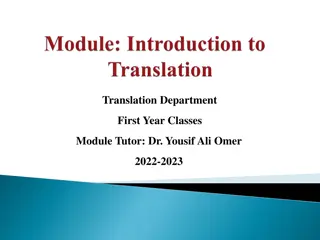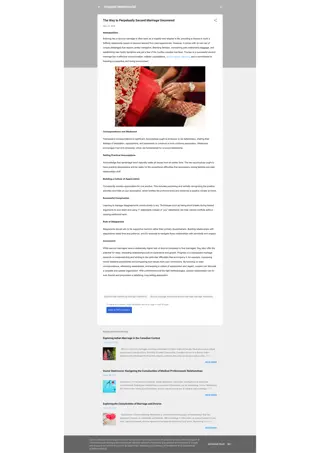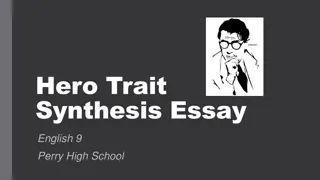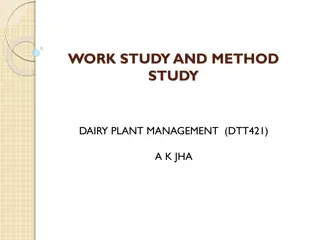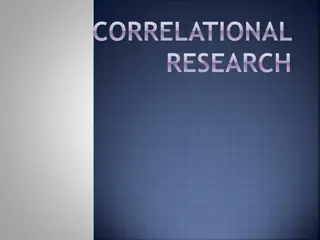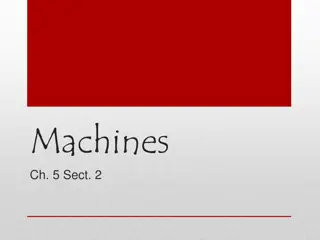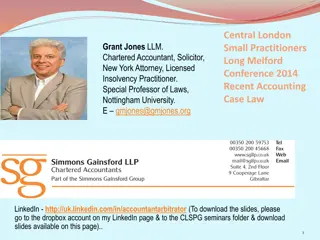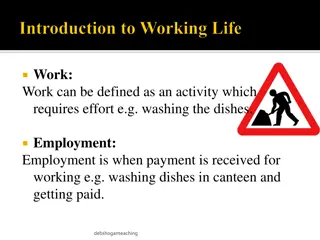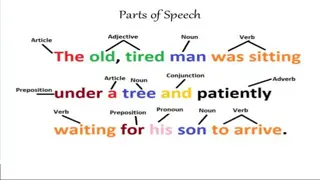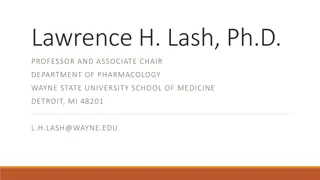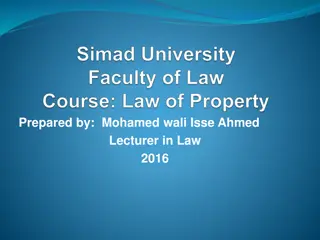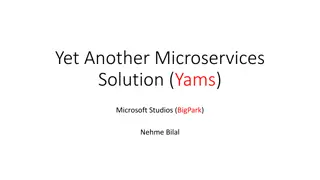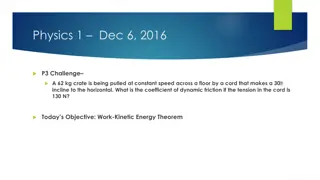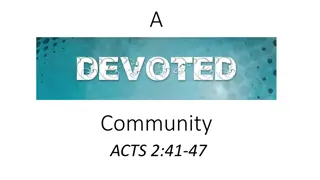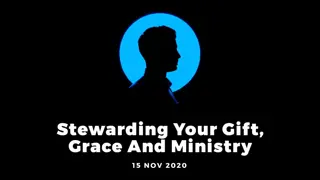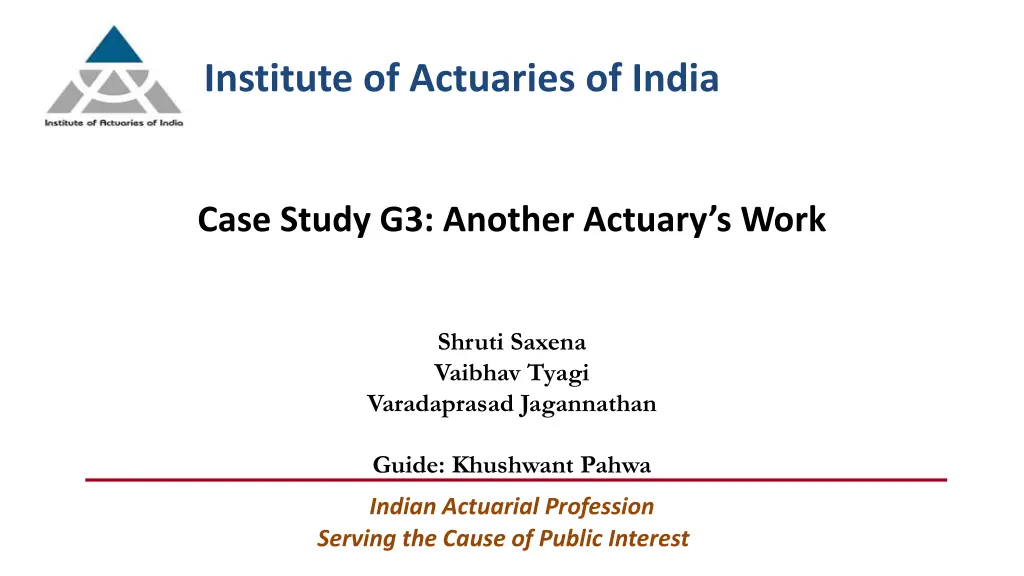
India Institute of Actuaries Case Study G3: Actuary's Work Analysis
Explore the case study of an actuary's work within the Indian Actuarial Profession, serving the cause of public interest. Analyze scenarios, compliance with standards, and conclusions drawn.
Download Presentation

Please find below an Image/Link to download the presentation.
The content on the website is provided AS IS for your information and personal use only. It may not be sold, licensed, or shared on other websites without obtaining consent from the author. If you encounter any issues during the download, it is possible that the publisher has removed the file from their server.
You are allowed to download the files provided on this website for personal or commercial use, subject to the condition that they are used lawfully. All files are the property of their respective owners.
The content on the website is provided AS IS for your information and personal use only. It may not be sold, licensed, or shared on other websites without obtaining consent from the author.
E N D
Presentation Transcript
Institute of Actuaries of India Case Study G3: Another Actuary s Work Shruti Saxena Vaibhav Tyagi Varadaprasad Jagannathan Guide: Khushwant Pahwa Indian Actuarial Profession Serving the Cause of Public Interest
Agenda The Case Study Scenario A, PCS and course of actions Scenario B, PCS and course of actions Scenario C, PCS and course of actions Consultant v/s Employee Conclusion
Agenda The Case Study Scenario A, PCS and course of actions Scenario B, PCS and course of actions Scenario C, PCS and course of actions Consultant v/s Employee Conclusion
The Case Study Acquisitive Insurance group negotiating purchase of an insurance operation, a subsidiary of Divestment Re. Part of the documentation available is an actuarial report prepared by an UK actuary. 4
The Case Study : Our Role Actuarial Report 5
The Case Study : Scenarios Report complies with GN12 but assumptions are somewhat unrealistic Report does not comply with GN12, although there is no indication that the underlying work was deficient. Underlying methodologies unsuited for the classes of business or using inappropriate data without adjustment. work was incompetent for e.g. 6
The Case Study : Setting the context Report is prepared by an UK actuary. We have assumed he is also an actuary in India for IAI s PCS and GNs to apply to him as per PCS Section 1.4 and 1.5. We are analysing case study within the terms of Professional Conduct Standards (PCS) and Guidance Notes (GN) applicable to members of Institute of Actuaries of India. Case study mentioned GN12, while APSs are mandatory in nature and GNs are recommendatory. 7
Agenda The Case Study Scenario A, PCS and course of actions Scenario B, PCS and course of actions Scenario C, PCS and course of actions Consultant v/s Employee Conclusion
Scenario A Report complies with GN12 but assumptions are somewhat unrealistic 9
Scenario A : Is the work Deficient? Refer to complete report for justification of assumptions Justification Discuss concerns with author and/or management of Divestment Re Discuss Second opinion from another actuary Refer to audit/review report by Divestment Re s actuarial consultants, if available Opinion 10
Scenario A and PCS If the work is deficient, PCSs to consider: PCS section 3: Standards for advice Section 3.2: Many assignments offered to actuaries require considerable knowledge and experience for proper completion. Actuaries must not give advice, unless: a) satisfied of personal competence in the relevant matters, or b) acting in co-operation with, or with the guidance of, someone (not necessarily an actuary) with the requisite knowledge and experience. Section 3.5: Advice should have sufficient detail and explanation for the recipient to judge both the appropriateness and implications of accepting the advice. 11
Scenario A and PCS If the work is deficient, PCSs to consider: PCS section 8: Relations to other member Section 8.1: Criticism of other member s work is acceptable provided it is properly reasoned andbelieved to be justified. Section 8.3: Other members can hold different professional opinions and special circumstances may exist in a particular case. 12
Scenario A: Course of actions If unresolved, raise your criticism to professional body for breach of PCS Section 3.5 as per PCS Section 4.3.1 and Section 4.3.5 Raise concern and criticize the work to Acquisitive Insurance Group and Divestment Re Analyze and conclude 13
Scenario A: Course of actions PCS PCS Section 4.3: Action to be taken on discovering a breach of guidance by another member Section 4.3.1: On becoming aware of any event which appears to be a material breach by another member of any professional guidance or other guidance, a member must take appropriate action at the earliest opportunity. Section 4.3.5: If the matter is not resolved as a result of discussions with other members, then the member must refer the matter to the professional body. It is important to maintain appropriate confidentiality in all course of actions as per PCS 2.5: Confidentiality 14
Agenda The Case Study Scenario A, PCS and course of actions Scenario B, PCS and course of actions Scenario C, PCS and course of actions Consultant v/s Employee Conclusion
Scenario B Report does not comply with GN12, although there is no indication that the underlying work was deficient. 16
Scenario B : Is the work Deficient? Applicable on the author? If yes, reasons for non-compliance? GN12 Review complete report. Declaration by author on professional standards. Report Special Circumstances Any special circumstances under which report was prepared? Purpose of report. Opinion Second opinion from another actuary 17
Scenario B and PCS If the work is deficient, PCSs to consider: PCS section 3: Standards for advice Section 3.5: Advice should have sufficient detail and explanation for the recipient to judge both the appropriateness and implications of accepting the advice PCS section 4: Breach of professional guidance Section 4.1: A material breach of PCS or GN is itself a ground under disciplinary complaint. It would also amount to strong prima facie evidence of misconduct. Section 4.2: A failure to comply with a GN is not of itself a ground for complaint under the disciplinary procedures. 18
Scenario B and PCS If the work is deficient, PCSs to consider: PCS section 8: Relations to other member Section 8.1: Criticism of other member s work is acceptable provided it is properly reasoned and believed to be justified. Section 8.3: Other members can hold different professional opinions and special circumstances may exist in a particular case 19
Scenario B: Course of actions If unresolved, highlight it to professional body for breach of PCS Section 4.1 as per PCS Section 4.3.1 and Section 4.3.3 If GN12 breached and no special circumstances: Request relevant information. Highlight to Acquisitive Insurance Group and Divestment Re Analyze and conclude GN12 Applicability? 20
Scenario B: Course of actions and PCS PCS Section 4.3: Action to be taken on discovering a breach of guidance by another member Section 4.3.1:On becoming aware of any event which appears to be a material breachby another member of any professional guidance or other guidance, a member must take appropriate action at the earliest opportunity. Section 4.3.3: In deciding whether a breach of guidance is material, the member may need to exercise judgment. A breach which has not led to a materially adverse outcome may be regarded as material if a repetition of it in future could lead to a materially adverse outcome. If the member is unsure whether or not a matter is material, the member must seek guidance from the professional body. It is important to maintain appropriate confidentiality in all course of actions as per PCS 2.5: Confidentiality 21
Agenda The Case Study Scenario A, PCS and course of actions Scenario B, PCS and course of actions Scenario C, PCS and course of actions Consultant v/s Employee Conclusion
Scenario C Underlying work was incompetent for e.g. methodologies unsuited for the classes of business or using inappropriate data without adjustment. 23
Scenario C : Is the work Deficient? Special Circumstances Justification Another Opinion Scenario A & B Review complete report Any further update(s) available? Was the report peer reviewed? Report Older Reports Are older reports of Divestment Re compliant? Implication Implications of incompetent reports on all relevant stakeholders. 24
Scenario C and PCS If the work is deficient, PCSs to consider: All the sections of PCS as previously mentioned in scenario A & B are equally applicable PCS section 2 and subsections: Professional Standards Section 2.2: Member should not act in a manner which denigrates its reputation or impugns its integrity PCS section 3: Standards for advice Section 3.2: Many assignments offered to actuaries require considerable knowledge and experience for proper completion. Actuaries must not give advice, unless: 25
Scenario C and PCS If the work is deficient, PCSs to consider: a) satisfied of personal competence in the relevant matters, or b) acting in co-operation with, or with the guidance of, someone (not necessarily an actuary) with the requisite knowledge and experience. Section 3.3: Notwithstanding paragraph 3.2, an actuary may provide advice if the circumstances aresuch that, having regard to all the relevant factors, it would be contrary to the client s interests to decline to do so. However, the actuary must make clear to the recipient that, in the absence of the constraining circumstances, the actuary would have recommended referring the matter to someone with the relevant knowledge and experience. 26
Scenario C: Course of actions If unresolved, highlight it to professional body for breach of PCS Section 3.2 and Section 3.3 as per PCS Section 4.3.1, Section 4.3.3, Section 4.3.4 and Section 4.3.5 If material breach and no special circumstances: Seek more information and remedial action from the author and Divestment Re Highlight to Acquisitive Insurance Group and Divestment Re Judge, if there has been a material breach Analyze and conclude 27
Scenario C: Course of actions and PCS PCS Section 4.3: Action to be taken on discovering a breach of guidance by another member Section 4.3.1:On becoming aware of any event which appears to be a material breachby another member of any professional guidance or other guidance, a member must take appropriate action at the earliest opportunity. Section 4.3.3: In deciding whether a breach of guidance is material, the member may need to exercise judgment. A breach which has not led to a materially adverse outcome may be regarded as material if a repetition of it in future could lead to a materially adverse outcome. If the member is unsure whether or not a matter is material, the member must seek guidance from the professional body. 28
Scenario C: Course of actions and PCS Section 4.3.4: If the member decides that the nature of the breach is such that action is called for, the member must, in the first instance, consider discussing the apparent breach with the other member. Possible objectives of having such a discussion include: seeking more information about the matter, so as to form a view whether there has actually been a material breach; and/or to explore whether the matter is one where the breach can either be mitigated or be rectified entirely by the other member taking remedial action. Section 4.3.5: If the matter is not resolved as a result of discussions with other members, then the member must refer the matter to the professional body. It is important to maintain appropriate confidentiality in all course of actions as per PCS 2.5: Confidentiality 29
Agenda The Case Study Scenario A, PCS and course of actions Scenario B, PCS and course of actions Scenario C, PCS and course of actions Consultant v/s Employee Conclusion
Consultant v/s Employee A consultant is bound by the scope of his assignment, hence limited in actions A consultant s criticism should not give him or his firm unfair professional advantage as per PCS Section 9: Publicity Section 9.1: While publicity for the actuarial profession is encouraged, any form of publicity that might give an actuary an unjustified or unfair professional advantage, as opposed to a legitimate commercial advantage, is prohibited. Publicity which is likely to detract from the standing of the profession is prohibited, unless the criticism forms part of a justifiable debate conducted in the public interest. Professional standards applicability are same for any actuarial professional 31
Agenda The Case Study Scenario A, PCS and course of actions Scenario B, PCS and course of actions Scenario C, PCS and course of actions Consultant v/s Employee Conclusion
Conclusion An actuary is always bound by GNs and PCSs. Extensive judgement is required in determining whether a breach of PCS has occurred or not. Course of actions will slightly differ in each case, however, guiding principles remain the same. Profession places considerable reliance on the conscience of all members to maintain highest standards of conduct. 33


